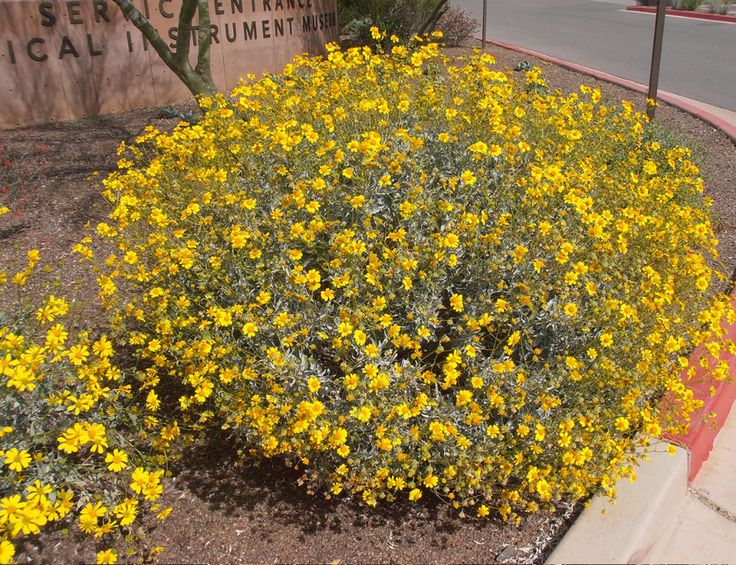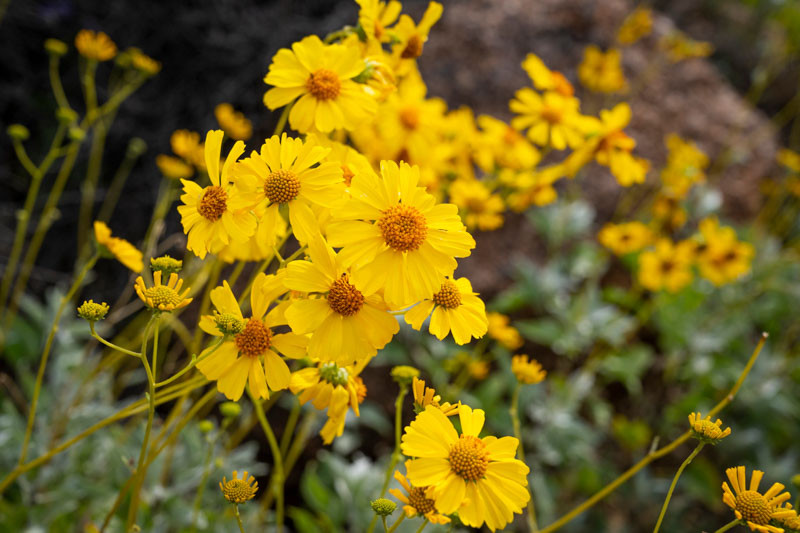Encelia farinosa

Encelia farinosa, commonly known as Brittlebush, is a stunning native plant species found in the arid regions of the southwestern United States and northern Mexico.
Admired for its golden flowers, silvery foliage, and resilience in harsh environments, Brittlebush holds a special place in both natural landscapes and cultivated gardens.
In this comprehensive article, we will explore the botanical intricacies, habitat preferences, life cycle, ecological importance, conservation status, and care guidelines for Encelia farinosa.
Botanical Description
Brittlebush is a drought-tolerant perennial shrub characterized by its woody stems, silver-gray foliage, and bright yellow flowers.
The plant typically grows to a height of 2 to 4 feet (0.6 to 1.2 meters) and features multiple branching stems covered in felt-like hairs.
The leaves are alternate, simple, and oblong to lanceolate in shape, with a distinctive silvery-gray coloration due to dense hairs that cover the leaf surface.
In late winter to early spring, Brittlebush produces an abundance of daisy-like flowers on long stalks, each with numerous yellow petals surrounding a central disk.
These cheerful blooms add a splash of color to the desert landscape and attract a variety of pollinators, including bees, butterflies, and beetles.
Habitat and Distribution
Brittlebush is native to the arid and semi-arid regions of the southwestern United States, including California, Arizona, Nevada, Utah, and New Mexico, as well as parts of northern Mexico.
Brittlebush typically thrives in desert scrub, chaparral, and sandy washes, preferring well-drained, sandy, or gravelly soils.
In its native habitat, Brittlebush thrives in hot, dry climates and often dominates, stabilizing soils, providing wildlife habitat, and enhancing biodiversity.
Life Cycle and Phenology
As a perennial plant, Brittlebush follows a typical life cycle for shrubs in arid environments. Growth occurs primarily in response to rainfall, with new shoots emerging from the base of the plant following periods of precipitation.
Flowering typically occurs in late winter to early spring, with peak bloom periods varying depending on local climate conditions.
After flowering, small, dry fruits containing seeds develop, which are dispersed by wind, animals, and water.
Brittlebush can suffer dormant periods during periods of extreme heat and drought. This allows water and energy to be conserved until favorable conditions return.
Ecological and Cultural Importance
Brittlebush plays a significant ecological role as a habitat provider, food source, and soil stabilizer in desert ecosystems.
The dense foliage provides cover and nesting sites for birds, small mammals, and reptiles. While the flowers attract a variety of pollinators, contributing to the health and diversity of local ecosystems.
Additionally, Brittlebush has cultural importance among indigenous peoples of the Southwest, who have long used the plant for medicinal, ceremonial, and utilitarian purposes.
Brittlebush is also valued in landscaping and horticulture for its ornamental qualities, drought tolerance, and low maintenance requirements, making it a popular choice for water-wise gardens and native plant landscapes.
Habitat loss, urbanization, and climate change pose conservation challenges for Brittlebush, although it's not currently listed as threatened.

Caring for Encelia farinosa
Sunlight
Plant Brittlebush in a location that receives full sun, as it requires abundant sunlight for optimal growth and flowering.
Watering
Provide occasional deep watering during the establishment period, then gradually reduce watering once the plant is established.
Brittlebush is drought tolerant once established and prefers well-drained soil.
Soil
Plant in well-drained, sandy or gravelly soil with a neutral to slightly alkaline pH.
Brittlebush is adaptable to a variety of soil types but may struggle in heavy clay soils.
Pruning
Prune lightly after flowering to maintain a compact shape and remove dead or damaged branches.
You can prune Brittlebush to encourage bushier growth and enhance its ornamental appearance.
Mulching
Apply a layer of organic mulch, around the base of the plant to help retain soil moisture and suppress weeds.
Avoid covering the stems or foliage with mulch, as this can lead to rot and disease.
Following these care guidelines enables cultivating vibrant Brittlebush plants, enhancing arid landscapes, conserving native species, and fostering garden beauty.
Leave a Reply
You must be logged in to post a comment.